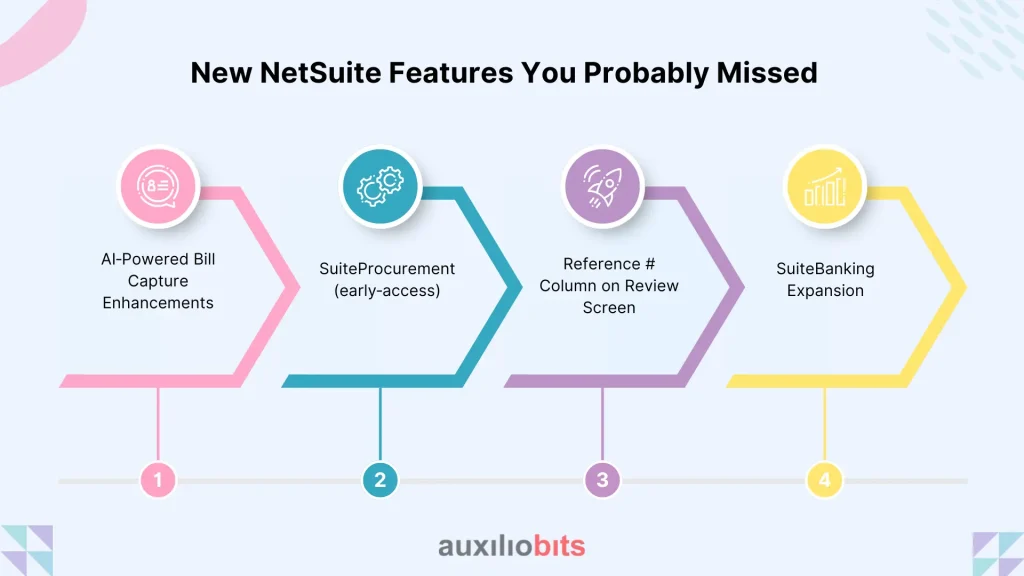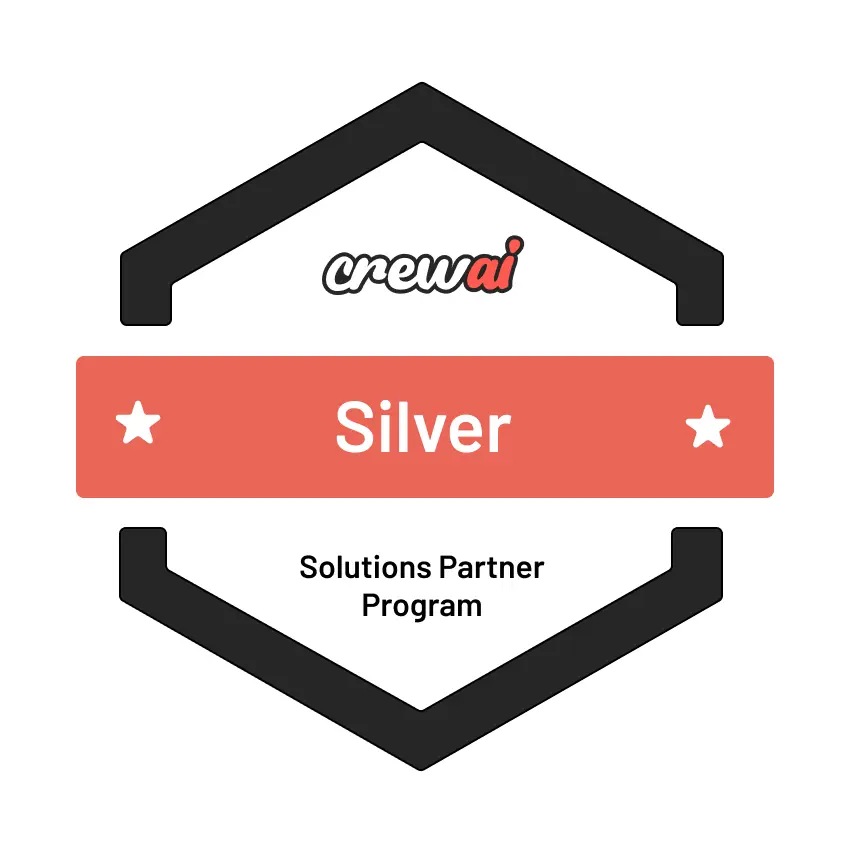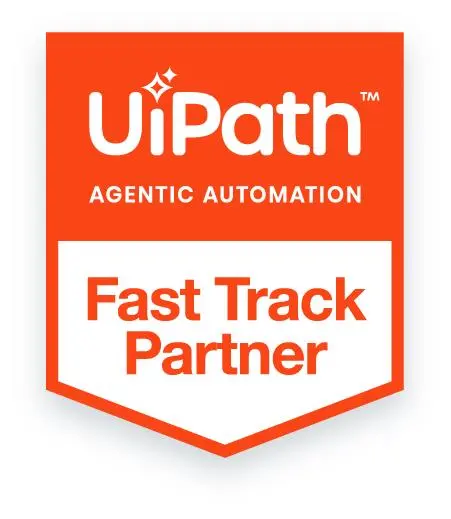
Key Takeaways
- AP is low‑hanging fruit for hyperautomation—clear rules, high volume, measurable ROI.
- Success hinges on a modular, event-driven architecture where IDP, RPA, AI, and NetSuite integration communicate via events, not brittle scripts.
- NetSuite’s latest releases quietly add features that can retire custom code overnight—stay current.
- Measure relentlessly: touchless rate, cycle time, cost per invoice, duplicate payments.
- Start with a narrow slice (one subsidiary), prove value, scale globally with confidence.
Traditional accounts payable (AP) workflows were designed for a paper-based economy; today, they drag like anchors on modern, cloud-native finance teams. Consider the five most common bottlenecks and why hyperautomation crushes them:
1. Document Deluge
- 73 % of suppliers still send invoices by email or portal upload.
- Attachments arrive in 15+ formats (PDF, JPEG, TIFF, XML, EDI).
- Manual keying produces error rates as high as 4%, forcing rework.
2. Siloed Data Islands
- PO lives in the procurement tool, goods receipt in WMS, and vendor master in ERP.
- Humans become swivel-chair APIs, copying values across screens.
3. Approval Gridlock
- Multi-level policies (department, cost center, spend tier) stall invoices in shared inboxes.
- Managers traveling or on PTO add days to the cycle time.
4. Late-Night Payment Runs
- Finances exports CSV batches at 10 p.m., hopes the bank file uploads correctly, and waits for a reconciliation report the next day.
5. Compliance Exposure
- Missing three-way-match documentation breaks SOX and GST rules.
- Duplicate payments or fraud slip through when teams are under deadline pressure.
Hyperautomation flips the script. By chaining process‑mining insights, IDP, AI decision models, and RPA bots under an event‑driven orchestrator, every invoice becomes a self‑describing transaction that routes itself toward payment. Touchless processing rates of 80 %+ are no longer aspirational—they’re table stakes.
Also read: HyperAutomation: Beyond RPA to Full-Scale Enterprise Autonomy
End‑to‑End Architecture at a Glance
Below is the reference stack that many Auxiliobits clients deploy within four months. Each layer talks to the next through publish–subscribe events, keeping the design loosely coupled yet lightning fast.
| # | Layer | What Happens Here | Typical Tools & Services |
| 1 | Experience | Suppliers submit invoices, finance approves them, auditors review flows. | React portals, Outlook add‑ins, mobile PWA |
| 2 | Engagement | Chatbots answer “Where’s my payment?” | Azure OpenAI chat, Twilio WhatsApp |
| 3 | Orchestration | Workflows, timers, error escrows | Camunda, Azure Service Bus, Kafka |
| 4 | Cognition | OCR, LLM extraction, anomaly scoring | Document AI, transformer OCR, isolation forests |
| 5 | Automation | RPA for legacy, iPaaS for modern apps | UiPath, Power Automate, Workato |
| 6 | Core | ERP, banking, master‑data truth | NetSuite Integration (SuiteTalk REST, SuiteScript), Stripe, SWIFT gpi |
Key design principles:
- Event First. Every significant change (invoice captured, match failed, payment booked) emits an event; downstream services subscribe to it.
- Micro‑decision services. Risk scoring, duplicate detection, and GL coding each run as small, containerised functions—swap them out without breaking the pipeline.
- Central observability. Logs, traces, and KPIs stream to a single data lake, allowing finance to monitor process health in near real-time.
Smart Data Capture & Validation
Hyperautomation’s first mile is intelligent document processing (IDP). A robust IDP layer converts messy inputs into structured, validated payloads:
The 7‑Step Capture Flow
Ingestion Points
- Email listener, SFTP drop, supplier portal, mobile scan.
- Auto‑classifies PDFs vs. images vs. EDI blobs.
Pre‑Processing
- De‑skew, de‑noise, and binarise scans for crisp OCR.
- Language detection chooses correct parsing model.
Deep‑Learning OCR
- Vision transformers read crisp text at 300 ‑ 600 dpi.
- Handles rotated stamps, watermarks, even handwritten notes.
Layout & Entity Extraction
- Graph‑neural networks map tables and columns.
- LLM‑based entity linking ties “total due” to amounts in table footers.
Business‑Rule Validation
- Check PO number format, currency symbol, date in open fiscal period.
- Anything failing validation moves to an “exceptions” queue.
Vendor Enrichment
- Match Tax ID to supplier master; add bank account and preferred currency.
- Auto‑populate missing GL codes from historical patterns.
Confidence Scoring & Routing
- If score ≥ 0.95 → straight through to ERP.
- 0.70 – 0.95 → light human in‑the‑loop review.
- < 0.70 → full AP analyst review with AI‑generated suggestions.
Result: 98 % extraction accuracy and fewer than 2 % invoices kicked back to suppliers.
NetSuite Integration Patterns That Actually Scale
Because NetSuite bills, credits, and payments sit at the heart of AP, NetSuite Integration quality makes or breaks ROI. Four patterns have proven battle‑tested:
1. Event‑Driven API Push
- Trigger: Orchestrator receives “invoice‑ready” event.
- Action: Bot calls POST /vendorBills, pushes JSON payload plus base‑64 PDF copy.
- Callback: Subscribes to SuiteAnalytics “afterSubmit” event for success/fail status.
- Benefit: Near‑real‑time posting, zero batch windows.
2. Embedded Approval Rules
- Store approval limits in a custom record (custrecord_spend_matrix).
- SuiteScript evaluates spend tier on beforeSubmit.
- If above threshold, route to next approver field; else auto‑approve.
- Updates bubble back as workflow events, letting the orchestrator mark tasks complete.
3. Multi‑Subsidiary Payment Handling
- Single supplier master shared across subsidiaries.
- context.getSubsidiary() sets bank account and FX rules dynamically.
- Local statutory reporting intact, global liquidity managed centrally.
4. Resilient Error Handling
- Wrap API calls in idempotent retry logic.
- Transient 429 (rate‑limit) errors use exponential back‑off.
- Permanent 400 errors (e.g., “invalid subsidiary”) escalate to human via Teams with auto‑generated remediation tips.
Intelligent Approvals & Exception Handling
Even in a hyperautomated world, some invoices need eyeballs. The goal is to focus humans only where their judgment adds value. Here’s how:
Risk Scoring Model Inputs
- Two‑way match variance (%)
- Historical vendor disputes
- Duplicate probability (hash of vendor ID + invoice # + amount)
- Price vs. catalog median
Approval Matrix Logic
- Low Risk (< 0.2) → Auto‑approved, auto‑posted.
- Medium Risk (0.2 – 0.6) → One approver (budget owner).
- High Risk (> 0.6) → Two approvers + AP manager.
Collaboration UX
- Approvers get a Teams card: “Review invoice #12345 (₹ 98 234). Approve / Hold / Reject.”
- Clicking “Hold” opens a mini‑chat with IDP‑extracted fields in context.
- Escalations follow after 24 / 48 hours of inactivity.
Exception Playbooks (run automatically)
- Duplicate detected → auto‑void the second invoice, email supplier why.
Missing PO → bot triggers supplier chatbot to request PO reference before routing to buyer.
Result: 60 % fewer emails and 70 % faster approvals.
Payment Orchestration & Cash‑Flow Visibility
Once invoices reach “Approved,” a payment bot orchestrates settlement while maximizing working capital.
Payment Pipeline in Action
Dynamic Batch Creation
- Group by currency, due‑date proximity, early‑pay discount eligibility.
- Consider cash‑on‑hand and forecasted collections.
Discount Capturing Logic
- If internal hurdle rate (e.g., 8 % APR) < discount rate (2 / 10 net 30), pay early.
- Bot simulates multiple scenarios and chooses optimal pay‑date.
Generation & Transmission
- Uses NetSuite “Payment Automation SuiteApp” to create ACH or SEPA XML.
- Secure FTPS to bank; confirmation events sync back automatically.
Cash‑Flow Dashboard (Power BI or NetSuite Analytics)
- Real‑time waterfall: Opening balance → scheduled payments → predicted collections → closing balance.
- Drill‑down by subsidiary, currency, bank account.
Automated Reconciliation
- Parse bank statement (MT940, BAI2).
- Match to payment records and mark as “Cleared.”
- Variances trigger exception workflow.
Outcome: AP teams reclaim one full workday per week previously spent on manual uploads and reconciliation.
New NetSuite Features You Probably Missed
NetSuite’s 2024.2 and 2025.1 releases quietly turbo‑charge AP when paired with hyperautomation:

AI‑Powered Bill Capture Enhancements
- Duplicate detection during upload, not after posting.
- Header capture accuracy +6 % vs. prior release.
- Drag‑and‑drop bulk delete of accidental uploads.
SuiteProcurement (early‑access)
- Integrates request‑to‑approve directly with vendor bill flow, enforcing catalog pricing.
- Eliminates off‑system spend that sabotages three‑way match rates.
Reference # Column on Review Screen
- Approvers see vendor invoice # at a glance.
- Cuts average review time by 17 seconds—small but compounding.
SuiteBanking Expansion
- Built‑in virtual card generation with cash‑back rewards.
- Bank‑feeds API upgrades to fetch intraday balances every 15 minutes.
All features expose REST hooks, so your existing NetSuite Integration code adopts them with a few endpoint tweaks.
Hidden Gotchas & Lessons Learned
Even seasoned automation teams stumble on these subtle landmines:
Subsidiary Tax Calendars
India GST vs. U.S. sales tax calendars mis‑align; pass explicit tax‑code IDs or risk mis‑classifications.
Timezone Drift
NetSuite defaults to account timezone. Bots running in UTC may post into prior period at month‑end. Always include postingPeriod.
Vendor Merge Chaos
Merging duplicates cascades new internalIds; orphaned bills break integration tests. Maintain a vendor‑ID cache table for mapping.
Chatbot Email Loops
If supplier bot auto‑replies to “missing PO,” and your inbound listener forwards every email back into IDP, you can create infinite loops. Implement correlation IDs and rate limits.
Rate‑Limit Surprises
- NetSuite enforces 10 REST calls per second per integration user. Bulk‑post invoices in batches or spin up multiple users for high volume.
KPIs, ROI, and Benchmark Results
Before‑and‑After Snapshot
| KPI | Manual Baseline | Hyperautomated Result | Impact |
| Touch‑less Processing | 15 % | 83 % | 5.5× |
| Invoice Cycle Time | 12 days | 36 hrs | −88 % |
| Cost per Invoice | US$ 8.10 | US$ 1.45 | −82 % |
| Duplicate Payments | 0.9 % | 0.04 % | −95 % |
| DPO Flexibility | ±2 days | ±7 days | +5 days |
How to Track These KPIs?
- Data Source: Orchestrator event logs + NetSuite saved searches.
- Frequency: Daily for cycle time, weekly for cost per invoice, monthly for duplicates.
- Visuals: Bullet charts to compare target vs. actual; trends line for rolling six‑month view.
Clients see full payback inside nine months, aided by early‑payment discounts and reduced banking fees.
Security, Compliance, and Auditability
Finance automation touches money and regulated data—no shortcuts allowed.
Least‑Privilege Access
- Create a dedicated role “AP_Bot” with permissions: Transactions → Payables → Vendor Bill (Create, View).
- No GL Edit or Journal Entry rights
Immutable Audit Trail
- Each bot action logs: bot ID, timestamp, hash of payload, original PDF SHA‑256.
- Stored in WORM (write‑once‑read‑many) S3 bucket.
Segregation of Duties
Bots cannot approve and pay the same invoice. Approval matrix enforces SoD inside NetSuite.
Encryption & Secrets
- OAuth 2.0 tokens stored in Azure Key Vault; rotated automatically every 30 days.
- Bank files transmitted via SFTP over SSH with 2048‑bit keys.
Regulatory Alignment
- SOX controls: automated three‑way match evidence retained for 7 years.
- India GST e‑invoicing: IRN & QR codes captured and stored as custom fields.
Scalability & The Road Ahead
Hyperautomation is a journey, not a project. Once AP is humming, reuse patterns across other finance towers:
- Purchase‑to‑Pay: Automatically generate POs from AI‑predicted reorder points.
- Order‑to‑Cash: Trigger credit‑risk agents before sales order approval.
- Record‑to‑Report: Auto‑reconcile intercompany transactions nightly.
- Treasury: Feed SuiteBanking data into ML models to predict 13‑week cash flow with ±1 % accuracy.
- Procure‑to‑Dispose: Track asset lifecycles and schedule automated disposal entries.
Future releases will embed Gen‑AI co‑pilots inside NetSuite screens. Your NetSuite Integration layer will soon surface proactive insights—“Pay this supplier three days early to capture a 3 % dynamic discount”—without writing a single extra bot.
Conclusion
Invoice‑to‑payment no longer needs to be the slow, error‑prone back office grind it once was. By blending process discovery, AI‑driven cognition, event orchestration, and airtight NetSuite Integration, finance teams unlock a self‑healing pipeline that pays suppliers on time, delights auditors, and frees cash. Auxiliobits clients routinely compress cycle time by 80 % and fund further digital initiatives with the savings. The blueprint is proven—your next move is simply to issue the first automated purchase order and let the system carry the baton to final settlement.








